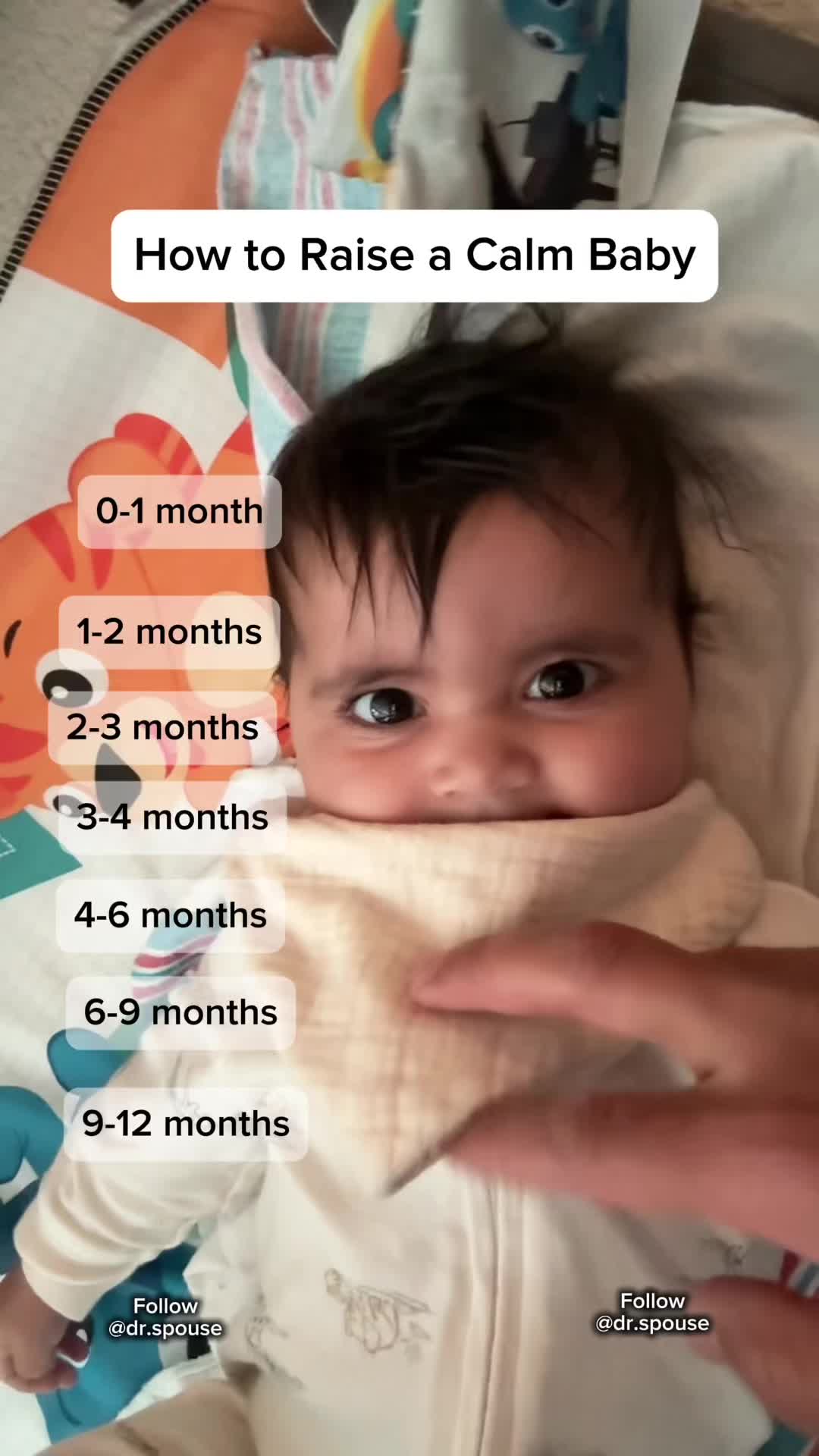@dr.spouse How to Raise a Calm Baby: Month-by-Month Calm doesn’t mean quiet. It …
How to Raise a Calm Baby: Month-by-Month Calm doesn’t mean quiet. It means safe, secure, and supported. Here’s how we focused on building a calm foundation during our baby’s first year. 0–1 month: We responded quickly to cries to build trust and avoided overstimulating environments. Dimming lights, soft voices, and slow movements helped ease the transition from womb to world. 1–2 months: We added a calming routine after feeds—holding, rocking, soft humming. Talking gently helped baby’s body and brain start recognizing calm as a cue. 2–3 months: We introduced short periods of quiet time—no distractions, just connection. Our baby mirrored our tone, so staying grounded ourselves really mattered. 3–4 months: Predictable nap and bedtime routines gave our baby something to rely on. We started announcing transitions like “Time to pick you up” to reduce startles and help them feel more in control. 4–6 months: We began pausing before jumping in when baby fussed, giving them a chance to settle. When things felt overwhelming, we stayed close and offered calm presence, not overstimulation. 6–9 months: We labeled emotions like “you’re upset” or “you’re frustrated” to help baby feel seen. No fixing—just holding space helped them regulate. 9–12 months: Repeating the same bedtime song, using the same bath routine, and offering safe space to explore gave our baby confidence and calm. None of this was perfect, but small things made a big difference. Comment calm and I’ll send you the full guide. #calmbaby #monthbymonth #gentleparenting #newbornsupport #emotionaldevelopment #drspouse #parentingtips #momlife #babyroutine #fyp
♬ Little Little Things – Cheyank
@dr.spouse How to Raise a Calm Baby: Month-by-Month Calm doesn’t mean quiet. It means safe, secure, and supported. Here’s how we focused on building a calm foundation during our baby’s first year. 0–1 month: We responded quickly to cries to build trust and avoided overstimulating environments. Dimming lights, soft voices, and slow movements helped ease the transition from womb to world. 1–2 months: We added a calming routine after feeds—holding, rocking, soft humming. Talking gently helped baby’s body and brain start recognizing calm as a cue. 2–3 months: We introduced short periods of quiet time—no distractions, just connection. Our baby mirrored our tone, so staying grounded ourselves really mattered. 3–4 months: Predictable nap and bedtime routines gave our baby something to rely on. We started announcing transitions like “Time to pick you up” to reduce startles and help them feel more in control. 4–6 months: We began pausing before jumping in when baby fussed, giving them a chance to settle. When things felt overwhelming, we stayed close and offered calm presence, not overstimulation. 6–9 months: We labeled emotions like “you’re upset” or “you’re frustrated” to help baby feel seen. No fixing—just holding space helped them regulate. 9–12 months: Repeating the same bedtime song, using the same bath routine, and offering safe space to explore gave our baby confidence and calm. None of this was perfect, but small things made a big difference. Comment calm and I’ll send you the full guide. #calmbaby #monthbymonth #gentleparenting #newbornsupport #emotionaldevelopment #drspouse #parentingtips #momlife #babyroutine #fyp




Post Comment
You must be logged in to post a comment.